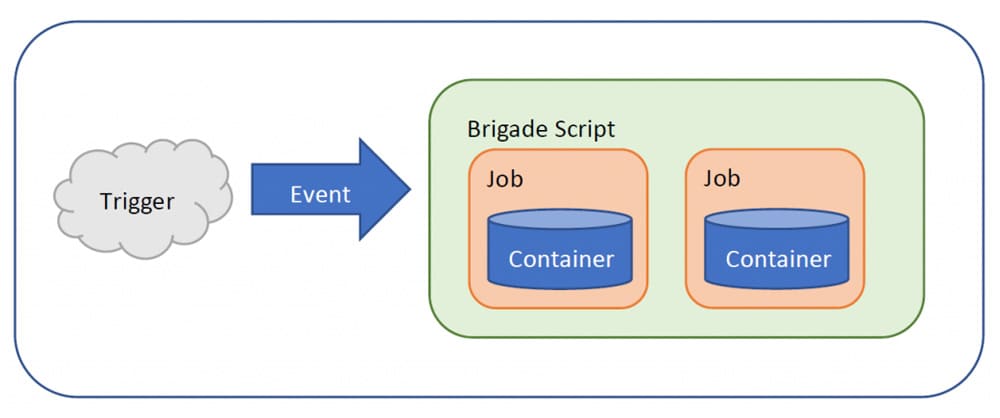Brigade: the new Kubernetes management tool from Microsoft
-
5273
-
0
-
0
-
0
On the 23rd of October 2017, Microsoft has announced the release of a new scripting tool for Kubernetes — Brigade, an event-driven framework for handling various types of jobs.
Deis, the team behind Helm and Draft, which was acquired by Microsoft in 2017, announced the latest addition to their line of Kubernetes scripting solutions. Brigade is an innovative tool, allowing event-driven scripts to perform various tasks within Docker containers under Kubernetes management.
Brigade works like this: it is essentially a listener, waiting for the triggering events. Once the event happens, the appropriate Javascript job begins to rok, uploading/building containers and/or performing various functions within them. The possibilities are really endless.
Brigade features and capabilities
At the time of release Brigade is boasting the following features:
- One-line installation due to native support from Kubernetes
- Fully-customizable event model and projects
- Brigade pipeline is actually an application, due to Javascript usage
- Both synchronous and parallel workflows are available, allowing to build really complex pipelines
- Function execution within the containers
- Complete support of RBAC, Kubernetes pods, volumes and secrets.
More functions are sure to be added with time, yet even now Brigade is essentially your own serverless solution, enabling DevOps to quickly and easily automate nearly any task they can think of, using Javascript on their minicube or any Kubernetes cluster they work with.
Possible Brigade use cases
As Brigade is actually a framework for running Javascript jobs, DevOps can use it to automate literally any thinkable process within their infrastructure. Even better, the outcomes of one job can be triggering events for another one, allowing building chained pipelines, completely automating various tasks, like:
- Cron jobs, using Kubernetes CronJob to trigger various events at appointed intervals
- Convenient fully-automated testing and continuous integration, due to native Git repositories support, meaning pull and push requests can be the triggers for various jobs
- Workflows for processing Big Data, with fan-out/fan-in or map/reduce being the simplest and most common of the ETL workloads available due to parallel and serial execution
- Batch processing, like running a data analysis or automated in-container backups
- Building own event gateways for various tasks like sorting and responding to incoming emails, monitoring the issue queue — if you can imagine it, you can build it with Brigade.
These, and much more functions are available as instead of sifting through a trove of libraries to create Javascript sequences, Brigade actually chains Docker containers into Kubernetes scripts.
Conclusions
Brigade empowers the Kubernetes platform, imbuing it with the possibilities of chaining multiple containers for performing literally ANY task a DevOps team might need. Microsoft promises more features are under development and we are sure Brigade will take its rightful place in the DevOps toolkit, regardless if you use AWS or Azure. We are eager to lay our hands on this tool and integrate it into our workflow. What do you think of Brigade? Please share your thoughts in the comments below — and share the article if you found it useful or interesting!

